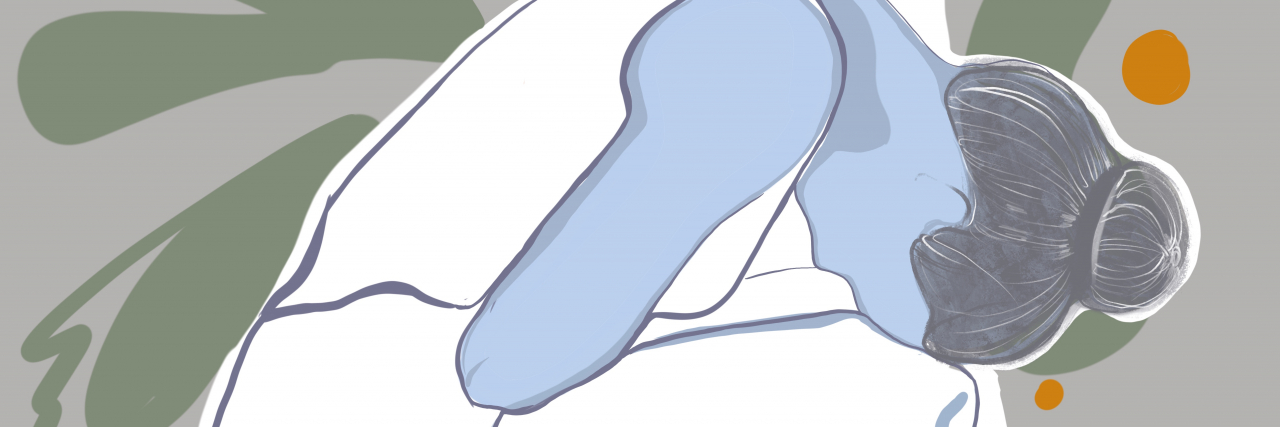Endometriosis is a condition that purportedly affects 1 in 10 women, although the accuracy of this statistic is questionable due to the difficulty in obtaining a diagnosis and the lack of knowledge about the myriad symptoms that can be attributed to the condition. According to numerous studies, endometriosis has a high rate of comorbidity with and is considered a risk factor in the development of numerous other diseases including but not limited to: infertility/subfertility, ovarian cyst, uterine fibroids, pelvic inflammatory disorder, interstitial cystitis, irritable bowel syndrome, constipation/dyschezia, ovarian cancer, and endometrial cancer. Many of these, if not diagnosed at an early enough stage, can be fatal.
However, there is a more sinister aspect to the morbidity of endometriosis that has largely gone unnoticed and unrecognized, and that involves the direct link between endometriosis and mental health conditions like depression and suicidality. As this tweet points out, the morbidity rate for endometriosis is considered to be one in a million and therefore not seen as a fatal disease, even though deaths do in fact occur and are preventable. What is behind this and what can we do about it? Let’s dig deeper.
Can #endometriosis kill you?
It’s a #painfulcondition affecting people’s quality of life, but it’s still NOT considered a fatal disease even though the death rate is 1 per million. But the #complicationsofendometriosis and #suicidalthoughts are common…https://t.co/hUtYp0gVi8 pic.twitter.com/eRkLTysY1Z
— WorryHead (@WorryHeadBlog) March 21, 2022
First, the average length of time before a person can get a diagnosis for endometriosis is seven-and-a-half years. And a person cannot even get a diagnosis without undergoing an invasive laparoscopic procedure. Even when someone is finally diagnosed, there may be a lack of knowledge of what treatments may be available and what kinds of symptoms are associated with the condition. And while there are technically various stages of endometriosis (minimal, mild, moderate, and severe) and different types of endometriosis (superficial peritoneal endometriosis, endometriomas, deep infiltrating endometriosis (DIE), abdominal wall endometriosis) stage and type of endometriosis seldom correlate to the degree to which a person’s life is impacted by their condition or the severity of symptoms. This can make getting the appropriate care extremely challenging no matter how fervently an individual expresses their lived experience to their medical practitioner.
Additionally, there are psycho-social ramifications to living with endometriosis which can be more or less impactful to each individual depending upon their unique symptoms and values. Interruptions in the ability to work, infertility, social isolation, time spent undergoing medical procedures, painful sex, managing what is a chronic illness that isn’t treated like one, digestive interruptions, and constantly having your pain invalidated are all contributing factors to how much or how little endometriosis may impact your mental health. Virtually every aspect of one’s life can be disrupted by endometriosis, and hopelessness can foster the kind of depression that may have deadly consequences.
There’s a third factor at play here that connects both the challenge of getting a diagnosis and the ways in which the condition impacts one’s mental health and that is what is often called medical gender bias or medical misogyny. Not only are men more frequently the subjects for medical research, diseases that affect women and those assigned female at birth are under-researched and underrepresented in medical education. Historically speaking where women’s health was concerned, doctors were far more likely to attribute their complaints to emotional or psychogenetic factors, hence terms like “hysteria.” “Women’s ailments” are more frequently treated with anti-depressants or sedatives than with painkillers and there is an inherent assumption that women are somehow built to endure pain and therefore can tolerate it.
“The health gender gap is fed by perceptions of women as being over-emotional and exaggerating the extent of their pain and suffering…In reality, many women under-report symptoms… If they’re not taken seriously when they do see a doctor, it propagates the notion that whatever they’re going through isn’t serious, which can have massive implications.”
The medical system in and of itself is set up to place women and others with endometriosis in an impossible position of feeling simultaneously afraid of being invalidated, shamed, belittled, and othered in the most demeaning ways. And because of this, many will either needlessly suffer with endometriosis without ever getting a diagnosis or proper treatment, or they will be stigmatized by virtue of receiving a diagnosis and not fitting within some type of clean box of how they should be experiencing this condition. It’s a no-win situation and it does and will continue to result in unnecessary deaths.
What is the solution? To start, we need far more research dedicated to women’s health in general and women’s reproductive health in particular. This research needs to take into account racial, ethnic, and cultural diversity and it should be given the urgent attention that has often been afforded to male-associated conditions like erectile dysfunction. And above all else, conversations about women’s reproductive health need to become more normalized. There’s nothing inherently immoral or disgusting about women’s bodies. Instead of objectifying women’s bodies as things to be ogled, society and medical institutions need to begin treating our bodies as holistic and intricately functioning systems that are miraculous and deserve the utmost respect.
Getty image by J-art.

